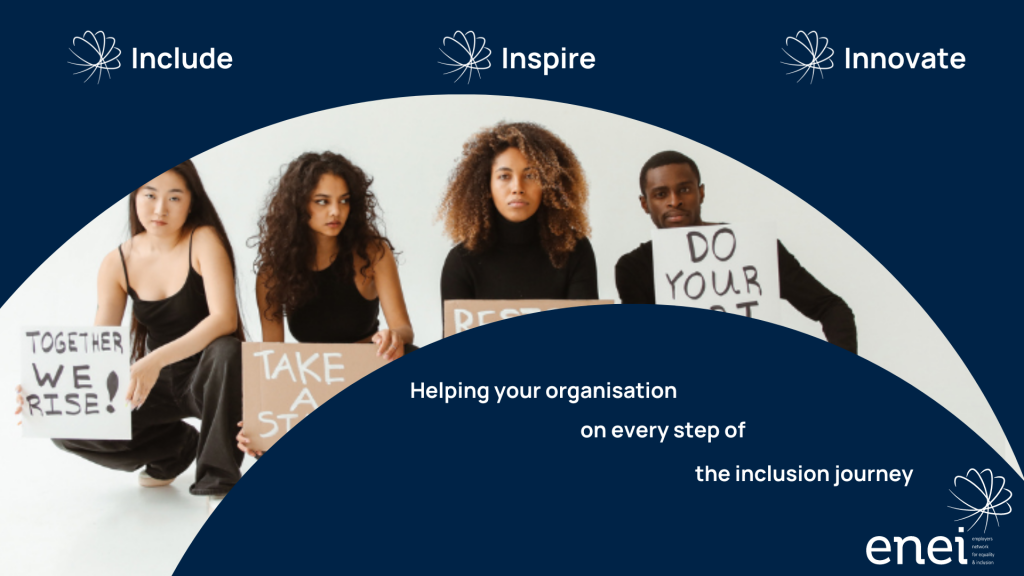

In all diversity and inclusion work, whether in the workplace or society at large, it’s vital to remember these roots in human rights.
The Equality Act and beyond
In Great Britain, the Equality Act 2010 legally protects those covered under its nine protected characteristics from being discriminated against in the workplace and wider society. These characteristics are:
- Age
- Disability
- Gender reassignment
- Marriage and civil partnership
- Pregnancy and maternity
- Race
- Religion or belief
- Sex
- Sexual orientation
In Northern Ireland, protection from discrimination is covered under several pieces of legislation, depending on the characteristic.
However, equality and discrimination law has its limitations. It doesn’t extend to all human characteristics and factors that may lead to exclusion or discrimination, such as socio-economic background, gender identity, or appearance. So, at Onvero, we treat all human characteristics equally, whether or not they are protected under law; after all, we are all equally human.
Defining diversity, equality, and inclusion in the workplace
Diversity, equality, and inclusion (DEI) are neither static nor separate and are part of a continuum that evolves, meshes, emerges, and overlaps. Human rights are inalienable but not absolute, so it’s up to us human beings to be kind, compassionate, and respectful to each other and ensure our workplace cultures are truly inclusive.
In the context of the workplace, the definitions that we work to are:
- Diversity is the ability of organisations to attract and retain talent with diverse backgrounds, views, and approaches.
- Equality is the foundation, where everyone employed by or seeking employment with, an organisation has equality of opportunity.
- Equity ensures that each individual’s needs are met through reasonable adjustments or other accommodations. If equality of opportunity for all is the goal, then equity is how we get there.
- Inclusion is when organisations actively involve staff in participating in the activities and decisions that shape the organisation.
Belonging is an intrinsic part of wellbeing
Belonging is an essential component of DEI. Most employers support employee wellbeing, and wellbeing and belonging go hand-in-hand. Wellbeing is firmly founded on a sense of belonging and the connection to others. When people feel they belong at work, they experience more significant meaning, satisfaction, and stability and, as a result, are more productive.
Sustaining an inclusive culture
Building and maintaining an inclusive culture is a whole organisation imperative, and there are three key components to its sustainability. These are:
- Culture
- Leadership
- Strategy
Culture: The beating heart of your organisation
Having the right culture is the foundation for organisations to be truly inclusive; the culture needs to be aligned with all of the human principles that underpin DEI, where every individual in an organisation feels that visceral sense of belonging, where they are psychologically safe, where their views and opinions are listened to and acted upon, and where they can bring their whole selves to work.
Leadership: Inclusion starts from the top
An organisation’s senior leadership team sets the tone and priorities. It leads its culture, and so it follows that the most diverse and inclusive organisations have senior DEI champions and sponsors who provide meaningful and impactful leadership in this area.
Strategy: Integrating DEI into your business strategy
When a DEI strategy sits on its own, it’s a perpetual challenge to get widespread and consistent traction. When DEI is a golden thread that gets woven into the wider organisational strategy, it becomes business as usual and the standard way of working. This enables DEI to be integrated into every aspect of the employee life cycle—from recruitment and on-boarding to retention and progression.
Let us help you navigate the workplace diversity, equality, and inclusion (DEI) landscape. Get in touch with the Onvero Team. Contact us.
